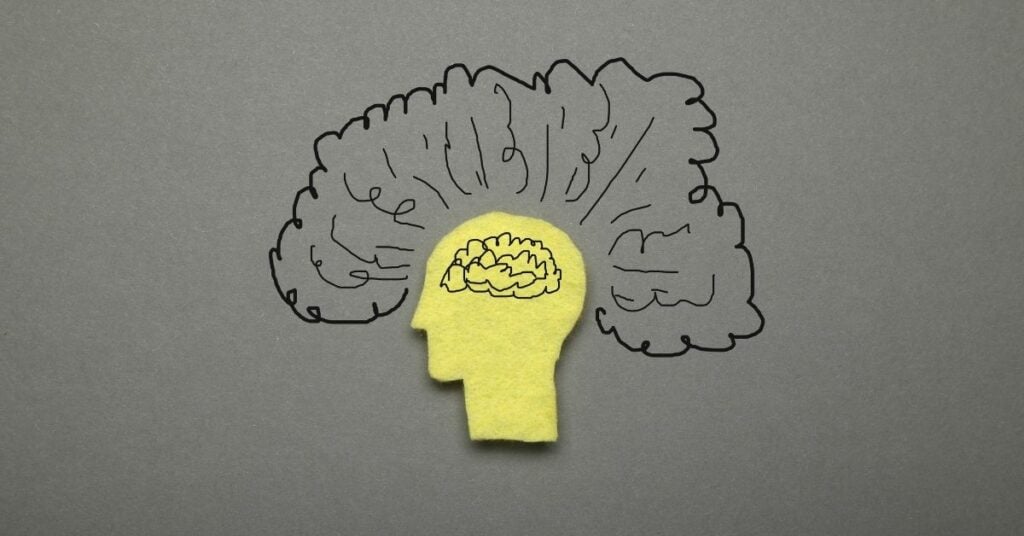Fear: What it is and how to manage it
Reviewed by Stephanie Steinman, PhD, CSAC

Many thousands of years ago, fear helped our ancestors survive challenging environments. Today, this basic emotion can still motivate us to protect ourselves and respond to all kinds of perceived threats.


Fear is normal, and it can be both healthy and helpful. But if you feel fear that’s constant or out of proportion to the situation, you may find it hard to function.
Common fears
Our fears can be totally rational, based on the genuine likelihood of danger—for example, being afraid of falling when you ride a bike for the first time. Sometimes, though, our fears are persistent, outsized, or based on things that don’t realistically pose a threat.
Very common general fears include:
- Fear of death: You may be afraid of encountering life-threatening situations, losing a loved one, or aging and facing mortality.
- Fear of failure: You may worry about not being able to achieve your goals or live up to your own expectations.
- Fear of losing control: Many people fear the consequences of losing control of their bodies, minds, environments, or possessions.
- Fear of the unknown: Uncertainty, unfamiliarity, or unpredictability can sometimes cause strong anxiety, as can things like having to make decisions without knowing all the facts.
- Fear of change: Change can be especially hard to deal with if it’s unexpected or outside your comfort zone.
- Fear of intimacy: If you’re afraid of being rejected or hurt, you may steer clear of close relationships.
- Fear of rejection: You may worry that you’re not good enough or that you’ll be criticized if you put yourself out there.
- Fear of abandonment: You may fear being alone or being left behind by loved ones.
- Fear of commitment: You may hesitate to commit to a relationship, job, or responsibility because you’re afraid of becoming trapped.
- Fear of success: Some people never achieve their goals because their fears about the responsibilities that come with success outweigh their desire to succeed.
More specific types of common fears include being afraid of heights, spiders, darkness, enclosed spaces, and needles. Some of these fears may also be considered phobias—and if any of them feel familiar, it can help to know you’re not alone.
What are phobias?
A phobia is a type of intense fear that’s persistent and out of proportion to the actual threat. People with phobias may go to great lengths to avoid the things they’re afraid of, even if it disrupts their lives. For example, phobic fear of dogs (cynophobia) might cause someone to avoid all sidewalks for fear of encountering a dog on a leash.
Fear vs. anxiety
Fear and anxiety are closely related and can produce overlapping physical responses, but they’re not the same thing. Fear is a response to something you see as an immediate threat, while anxiety is a more general feeling of unease or worry.
One way to think about the difference is to imagine walking down a remote road in the dark. The uneasy feeling that you have as you walk is probably anxiety—imagining what might happen causes your physical and emotional response.
If a large growling dog rushes up or you hear footsteps behind you, you might feel fear. In those examples, a specific potential threat causes your response.
Causes of fear
Fear is a complex emotion. Factors that can contribute to it include:
- Trauma: Profoundly stressful experiences such as sexual assault, natural disasters, car accidents, or combat can cause you to develop posttraumatic stress disorder (PTSD). PTSD symptoms include fear that you may continue to feel long after a traumatic event is over.
- Genetics: Fearfulness can be passed down through generations. Anxiety disorders, for instance, may run in families.1
- Physiology: Your brain’s particular structure and functioning can make you more prone to fear or anxiety. Research also shows that people with anxiety disorders tend to have higher levels of the stress hormone cortisol.2
- Personality: Personality traits like neuroticism and social anxiety may make you more likely to feel fear.
- Environmental factors: If you grew up in a chaotic or abusive household, you may be more likely to develop a phobia or have an exaggerated fear response.3
- Conditioning: Fears can be learned from others. For example, if you see your parent shudder and move away every time a bee flies by, you may learn to be afraid of bees as well.
- Media exposure: Taking in frightening events through the internet, news, movies, TV, and books can trigger fear—especially in younger kids whose brains haven’t yet learned how to process such intense scenes.
- Lack of knowledge, understanding, or experience: You may fear unfamiliar things because you don’t know what to expect or how to prepare.
How we feel fear
Our physical response to danger and stress is known as the fight-or-flight response. It’s meant to help us respond to threats. There are four basic response categories:
- Fighting (retaliating)
- Fleeing (escaping)
- Freezing (becoming immobile or unresponsive)
- Fawning (submitting or cooperating to try and reduce harm)
When you perceive something frightening, your brain sends signals that release different hormones into your bloodstream. Those hormones cause physical reactions such as:
- Heart palpitations
- Shallow or rapid breathing
- Chills, hot flashes, or sweating
- Trembling or shaking
- Muscle tension
- A rush of energy
- Dry mouth
- Upset stomach or nausea
- Chest pain
- Dilated pupils
In some cases, these physical responses to fear can be so intense that they lead to a panic attack, even when there’s no actual threat. Panic attacks themselves can be extremely frightening. They can even make you feel like you’re having a heart attack.
While your physical response to fear is mostly automatic and immediate, your psychological response is more complex. Fear can make you feel a range of emotions, including:
- Anxiety or worry
- Frustration or anger
- Embarrassment or humiliation
- Guilt or shame
- Sadness, helplessness, or hopelessness
- Overwhelmed or out of control
Fear can also affect your thinking: It can make you more likely to jump to conclusions or make decisions without thinking them through. Sometimes fear can even lead to hallucinations or delusions.
How fear impacts your mental health
Fear is a normal emotion that everyone experiences, but when it becomes chronic or feels uncontrollable, it can lead to or worsen mental health conditions such as:
- Anxiety disorders
- Depression
- Posttraumatic stress disorder (PTSD)
- Substance abuse
- Obsessive-compulsive disorder (OCD)
- Eating disorders
- Sleep disorders
A therapist can diagnose and treat conditions that include fear as a symptom. While the clinician’s approach will depend on each patient’s unique situation, treatment may include:
- Medication to treat anxiety or depression
- Cognitive behavioral therapy (CBT) to help you learn to change your thought patterns
- Exposure therapy, which involves gradually exposing you to the source of your fear
- Relaxation techniques such as yoga or meditation
- Group therapy or support groups for people with similar experiences and feelings
How to manage fear
Fear can’t be “cured,” but it is possible to manage it in healthy ways. Sometimes you might even be able to use fear to your advantage. Try these tips for managing fear:
Identify your triggers. What situations or events make you feel afraid? Once you know what your triggers are, you can start to avoid them or prepare for them in advance.
Breathe. When fear sets off your fight-or-flight response, it can be hard to think clearly. One way to counter this is to focus on your breathing and do some deep breathing exercises.
Focus on the present. Fear is often related to worry about the future. To counter this, focus on the present moment and what you’re doing right now. This can help you feel more in control and less overwhelmed. Looking at colors or shapes around you can also help ground you in the present.
Challenge your thoughts. One of the hallmarks of anxiety is negative or irrational thinking. When you’re feeling afraid, take a step back and examine your thoughts. Are they based in reality? What’s the evidence for and against them?
Find a creative outlet. Some people find that fear can be motivating or even inspiring. If this is the case for you, try channeling your fear into a creative process like writing, painting, or music.
Talk about it. Talking to someone you trust about what you’re feeling can help you gain a different perspective and figure out a plan to deal with your fear.
If you’re struggling to manage your fears on your own, help is available. Visit our directory to find a therapist who can help you learn what’s behind your fears and how to manage them.

Sources
About the author
The editorial team at therapist.com works with the world’s leading clinical experts to bring you accessible, insightful information about mental health topics and trends.
Related articles

A little horror goes a long way
Horror films are fun for some and nightmare fuel for others. Phobia expert...

Anxiety attacks: Symptoms, causes, and treatments
Anxiety attacks can have a negative impact on those who experience them, but...

5 lessons on how to overcome fear
We all experience fear. Learning how to face it, unpack it, and move through it...

